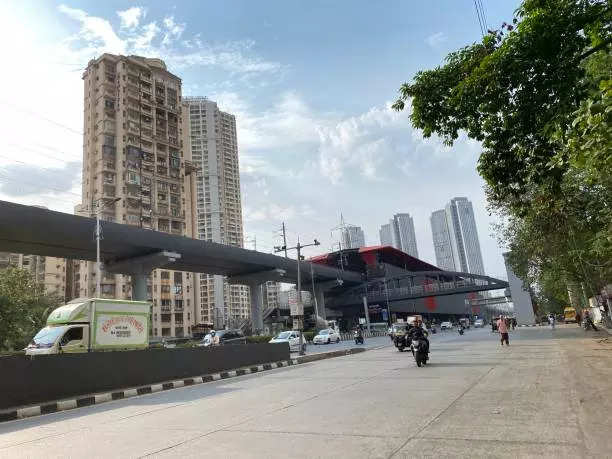Mumbai: 15.3Km Elevated Corridor On Western Express Highway Between Mahim-Malad To Reduce Traffic Snarls
The primary objective of the project is to increase the number of lanes on both sides of the highway to either 14 or 16, including lanes underneath the elevated corridor. Underpasses will be built at key junctions such as Kala Nagar, JVLR, and Aarey to ensure smooth vehicular movement from arterial roads onto the highway without impeding traffic flow.

Updated Jun 14, 2023 | 07:53 AM IST

BMC officials estimate that the project's implementation will require approximately four years.
Photo : iStock
The estimated cost of the project is approximately Rs 5,500 crore, encompassing the construction of elevated corridors spanning 15.3km along the 25km-long highway. The elevated section will comprise three to four single-pier cable-stayed bridges, seamlessly connected to underpasses at various junctions. To accomplish this endeavor, the BMC will need to dismantle a few existing flyovers to make room for the cable-stayed bridges. This approach will not only free up space below, but also allow for the creation of additional lanes spanning the entire 25.33km length of the highway.
Corridor likely to get operational in four years: BMC
The BMC has unveiled an ambitious plan to construct an elevated corridor over the heavily congested Western Express Highway. Additional Municipal Commissioner P Velrasu stated that the project's tender process will commence after the completion of a detailed project report and government approval, with an estimated project duration of four years. The preparation of the DPR is anticipated to be completed within the next five to six months.
The primary objective of the project is to increase the number of lanes on both sides of the highway to either 14 or 16, including lanes underneath the elevated corridor. Underpasses will be built at key junctions such as Kala Nagar, JVLR, and Aarey to ensure smooth vehicular movement from arterial roads onto the highway without impeding traffic flow. The concept plan, devised by a consultant following a techno-economic feasibility study, takes into account future traffic projections, ongoing and upcoming infrastructure projects, as well as the integration of pedestrian-friendly amenities.
Presently, the highway consists of five lanes in each direction, supplemented by service roads covering approximately 50% of its total length. However, the highway experiences significant traffic volume ranging from 220,000 to 380,000 passenger car units per day, with peak traffic exceeding 10,000 PCU at various junctions, leading to severe congestion at multiple locations.
The proposed concept design entails a 15.3km elevated corridor between Mahim and Malad, divided into three to four sections supported by long single-pier cable-stayed bridges. Each flyover is expected to span multiple junctions, and the current configuration of six lanes on each bridge carriageway, four lanes on adjacent slip roads, and a total of 10 lanes will be modified to feature eight lanes on the bridges and either six or eight lanes on the roads beneath and adjoining the bridges, resulting in a total of 14 or 16 lanes on both sides of the highway.
Traffic segregation barriers will be incorporated into the project design. To address cross-directional traffic concerns, underpasses will be constructed at various junctions and bottlenecks. It should be noted that the concept design is subject to potential changes following the preparation of a detailed project report, scheduled to be completed within the next five to six months.
End of Article
Videos





02:08
What Are Key Differentiating Points In Poonawalla Fin Corp ? | Explains MD Abhay Bhutada

03:23
Breaking News | BJP MP Accuses Leaders Of 'Adjustment' With Congress In Karnataka, Sparks Infighting

03:38
Manipur Violence Erupts Again As Kukis, Meiteis Refuse Peace Talks| 9 Killed In Flare-Up

03:03
How MD of Poonawalla Fincorp Abhay Bhutada Started His Career ? | Business News

03:56
TMC Workers Clash In West Bengal Ahead Of Upcoming Panchayat Polls | Election News













